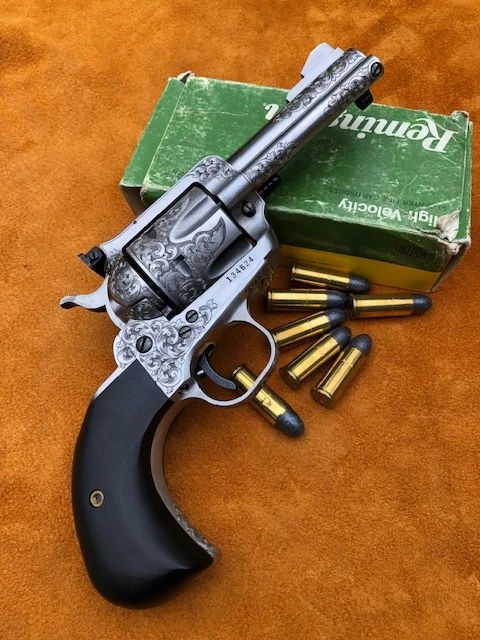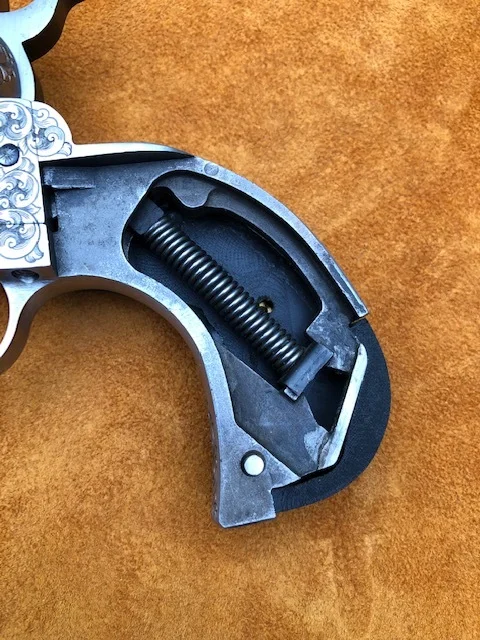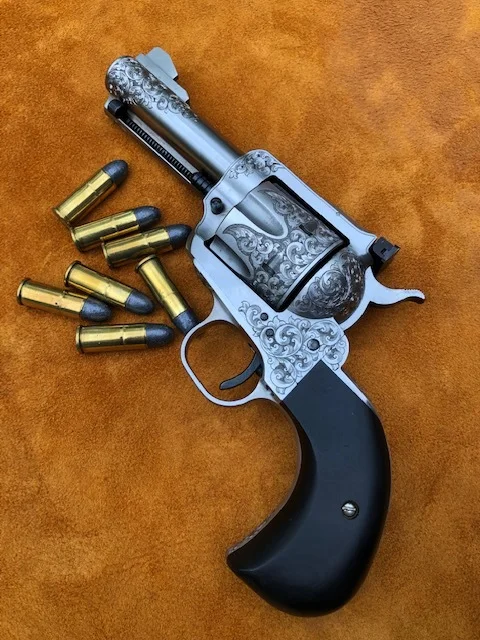Old Model Ruger .44 Spl.
Old Model Ruger .44 Spl.
While still in high school I began subscribing to Shooting Times, a gun magazine I found valuable as I learned about firearms. Right about the same time an ex-border patrol agent, peace officer, and cattle feed lot owner by the name of Skeeter Skelton began writing for them. His area of expertise was handguns, and I was fascinated by his articles and stories.
His handgun writing career took off. Apparently, he was a natural writer and storyteller, one who over the years had garnered extensive experience and skill with handguns. A picture or two showed him with a board full of shooting medals, proving he could compete in that arena. Those pictures were always accompanied by his statements that it was more fun to bum around wearing a holstered handgun, shooting and plinking opportune targets. I’m positive many readers and subscribers to Shooting Times did so only because of him.
Skeeter, like me, loved big bore handguns, and I remember many articles about 38-40, 44-40, .45 LC, .44 Spl., and .44 Magnum revolvers, both single and double action. He particularly loved the .44 Spl. cartridge and the guns chambered for it, which sadly had fallen from production.
In 1972 he wrote an article about doing a bit of gunsmithing magic, converting an Old Model Ruger .357 and a Smith & Wesson Model 28 to .44 Spl. I was instantly interested.
After my stint in the US Army, I returned home to find my sister had married a really nice fellow. I instantly liked him. Not only a fellow gun enthusiast, he’d attended Trinidad State Junior College gunsmithing course. I had a gunsmith for a brother-in-law! I immediately began spending weekends learning things at a level I’d never imagined.
So it was we began to gather the required components and tooling to do both .44 Spl. handgun projects in Skeeter’s article. It showed enough details I was able to make a holding fixture for boring the .357 cylinders to the larger .429 size required for the .44. I ordered a Douglas barrel blank for the Ruger, a 1950 target barrel for the Smith & Wesson, and brother-in-law already had a cylinder chambering reamer. Somewhere I came up with a .357 Ruger Blackhawk and a Smith & Wesson Highway Patrolman Model 28.
Working the weekends of several months I ended up with a small, compact Old Model Ruger in .44 Spl. If you remember, the frame on the .357 Old Model Blackhawk is smaller than the .44 Magnum Super Blackhawk. This made my .44 the perfect size, and exactly what I wanted. Skeeter knew what he was doing.
At some point I decided I wanted a bird’s head grip. Such simply didn’t exist for the Ruger at that time. Years later one was offered by both the Qualite company and eventually Ruger themselves. I was able to cut the back corner off the grip frame, then silver solder a piece in to bridge the opening I’d created. Making a set of micarta grips which filled the area of the grip frame taken away took some time, but eventually I succeeded.
Current barrel length is exactly 3 11/16”, just long enough for the ejector rod to bump the empties from their chambers. The little handgun balances perfectly. Since this is used as a comfortable carrying and shooting revolver, I use factory .44 Spl. ammo or equivalent reloads. If I want a .44 Magnum’s power, I take a .44 Magnum.
Skeeter’s writings created a great enough demand that Smith & Wesson brought out the blued Model 24 and the stainless steel Model 624 in .44 Spl., effectively making conversion of a Model 28 unnecessary. Ruger, too, after many years built Blackhawks in .44 Spl.
Skeeter died in 1988, but many of us still remember his writings. I have his books and several .44 Spl. revolvers (including these) to remember him by. For me, re-reading those books and shooting the revolvers is a step back in time.



